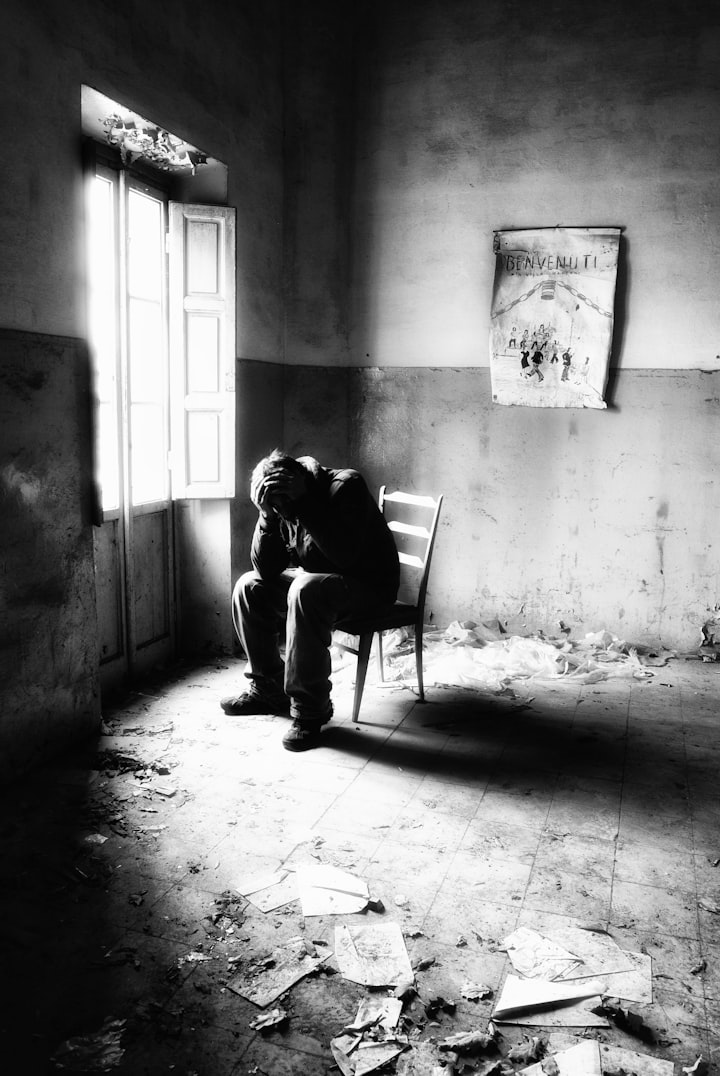Separation Anxiety disorder
By: Mahpara Mukhtar | Date: July 12, 2023

It is quite normal when a person feels anxiety when separated from someone who they love, especially children and young babies. But overtime, the babies and young children realize that the parents and their loved ones are probably going to return. However, this problem may sometimes persist and lead on, making it a huge problem for the person and for their loved ones. This is known as separation anxiety disorder.
Separation anxiety disorder is defined as - "Separation anxiety disorder is characterized by excessive fear and worry either during, or in anticipation of, separation from your most significant other(s). It’s the most commonly diagnosed anxiety disorder among children" (Rice, 2021). It is most common among children and babies at first, but may gradually disappear as they may figure that their parents might come back.
Differences of separation anxiety in a child and an adult
There is a huge difference in how separation anxiety disorder is in an adult and a child.
Babies typically experience separation anxiety during the eighth month of life. Babies at this age frequently experience fear when they encounter unfamiliar individuals. When their parents are around, they feel comfortable, but when their parents are gone, they feel unsafe. Toddlers start to comprehend that their parents will come home around the age of two.
Whereas, it's a lot more intense and not age appropriate. When separation anxiety interferes with behavior that is suitable for the child's age, it becomes a disorder.
In adulthood, it may be anxiety brought on by being apart from a partner or kid. It could involve disrespect for boundaries and issues with food and sleeping patterns brought on by separation. Adults who struggle to participate in daily activities may retreat as a result.
Symptoms
SAD (separation anxiety disorder) is marked by strong and persistent feelings and actions when one is separated from or anticipates being separated from a significant attachment figure. Some of the symptoms and behaviors include:
- Distress related to separation
- Clinging to a parent or partner
- Violent, or emotional tantrums
- Poor school performance
- Fear of being alone without the attachment figures nearby.
- Worrying that the other significant will leave them.
- Nightmares
- Complaints of physical illness, such as headaches, stomach-ache, nausea or vomiting.
Causes
SAD is believed to be influenced by biological, cognitive, and environmental variables, yet experts are still unsure of its exact etiology.
Environment
After a transition or stressful event in a child's life, SAD symptoms frequently manifest. A youngster may experience anxiety even in response to a good change. There are certain triggers that may increase the likelihood of SAD, which include:
- A change in routine
- A traumatic event where the person almost lost their loved one.
- A huge change in how the parent is available and their discipline method.
- A change in family structure, such as a death of a loved one, divorce, or a birth of a sibling.
- Illness
- Lack of adequate rest
There might be many more reasons to the cause of separation anxiety disorder, only a few are listed here.
Treatment
Whatever its root reasons, anxiety can be addressed with psychotherapy, counseling, medicine, or a combination of the two. The majority of anxiety-related disorders are treatable with the appropriate dosage of medication and counseling.
Psychotherapy
Cognitive behavioral therapy
A well-researched and scientifically supported approach of treating separation anxiety disorder is cognitive behavioral therapy (CBT). Children are provided skills and coping mechanisms to help them deal with situations involving separation as well as instruction on how to recognize their apprehensive sensations. When the kid successfully navigates these situations, the therapist and the child's parents both praise and validate them. The therapist also teaches the youngster to assess their triumphs.
Family therapy
Depending on the circumstances, family counseling may be recommended to explore any familial relationships that could be the cause of the child's separation anxiety. Attendees might include parents, siblings, and other members of the home or close relatives. These sessions could also assist in addressing how the rest of the household is being impacted by the child's separation anxiety.
Parent-child interaction therapy (PCIT)
Parents are taught therapeutic strategies by therapists that they may employ with their kids to help them in daily activities. To guarantee that their children are supported both within and outside of therapy sessions, parents, under the direction of the therapist, basically act as their child's therapist at home. Parents learn how to develop a close, trusting relationship with their children, reward good behavior and coping mechanisms, increase their self-esteem, and even lessen challenging behaviors like tantrums and violence.
All of the above forms of therapy may help the child overcome their anxiety and be able to handle themselves when the parent or a loved one is gone.
Medication
To treat the signs and symptoms of anxiety in children, use selective serotonin reuptake inhibitors (SSRIs). Inhibitors of serotonin-norepinephrine reuptake (SNRIs) also seem to be an efficient therapy option, while additional research is still required. SAD has no specific medication that allows it to be fully treated. However, as anxiety is part of this disorder, it may be treated through normal medications prescribed for an anxiety disorder.
Summary
It's crucial to keep in mind that treatment options are available despite how frightening a diagnosis of separation anxiety disorder may be. Calling the doctor immediately if suspecting that you or your kid suffers from a separation anxiety problem. They are able to assist you in choosing the best course of therapy or medication if necessary. Sometimes, they may even prescribe both medication and therapy if it is severe enough.
"Research from 2008 estimates that 50% of children who are referred for mental health treatment are diagnosed with separation anxiety disorder" (Rice, 2021). But this does not mean it is not curable. With the right number of medications and therapy, the person with SAD will be able to overcome the anxiety of the separation. Just knowing that the loved ones are here to support is enough to overcome the whole disorder.
References:
Rice, A. (2021). How Is Separation Anxiety Disorder Treated? [online] Psych Central. Available at: https://psychcentral.com/anxiety/treatment-of-separation-anxiety-disorder#what-is-it [Accessed: 12 Jul. 2023].
Cleveland Clinic (2022). Separation Anxiety in Adults & Children: Symptoms & Treatment. [online] Cleveland Clinic. Available at: https://my.clevelandclinic.org/health/diseases/23142-separation-anxiety [Accessed: 12 Jul. 2023].
Jones, H. (2021). What Do I Do If My Child Has Separation Anxiety? [online] Verywell Health. Available at: https://www.verywellhealth.com/separation-anxiety-disorder-symptoms-causes-treatment-5089469 [Accessed: 12 Jul. 2023].
Johnson, S. (2017). Separation Anxiety Disorder: Symptoms, Risk Factors & Diagnosis. [online] Healthline. Available at: https://www.healthline.com/health/anxiety/separation-anxiety#diagnosis [Accessed: 12 Jul. 2023].
Saxena, S. (2022). Separation Anxiety Disorder In Adults: Symptoms, Treatments, & How to Cope. [online] Choosing Therapy. Available at: https://www.choosingtherapy.com/separation-anxiety-in-adults/ [Accessed: 12 Jul. 2023].





Comments
There are no comments for this story
Be the first to respond and start the conversation.